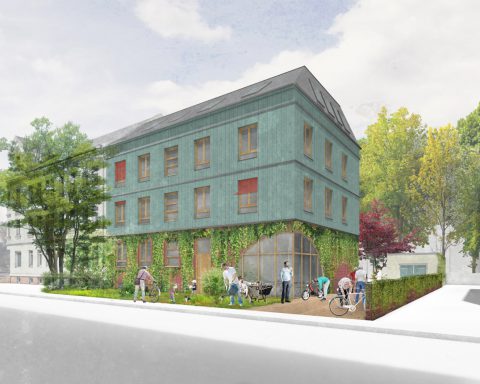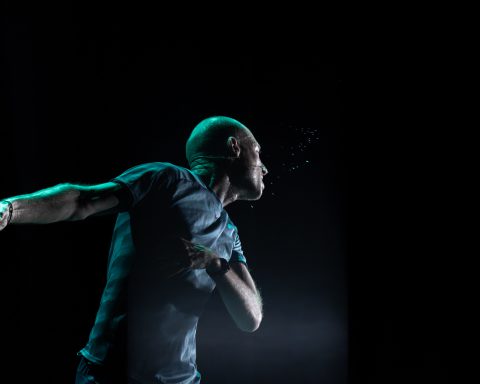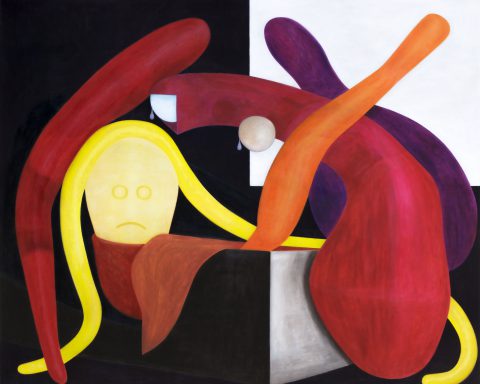
When we travel, no matter how much we say or feel that we want to get away from what we know, I think it’s normal to try to make associations with or look for the familiar. Often it has to do with food: Some people immediately look for globalized fast food chains, which I won’t judge (at least not publicly here), while I sometimes look for Brazilian churrascarias and can’t help but continue looking everywhere for that perfect little cup of cafézinho I can only have in Brazilian cities, and continue to label almost every other black coffee “dirty sock water.” Lately, though, I’ve been insistent on sticking to small local eateries wherever I happen to be traveling, and have instead been looking for the familiar in urban architecture and art.
For instance, in wandering the streets of Barcelona this summer, I felt that I could be in Rio de Janeiro or South Florida, where I have lived before. During a separate trip in September, my first ever to Asia and biggest this year, walking along the streets of Shanghai on my way to the M50 art galleries, I was delighted to feel like I could be in Plagwitz.
I guess another bit of familiarity I have kept on the back of my mind (and have on more than one occasion jumped at the opportunity of accessing), has been the old-factory-turned-art-gallery, which is, fortunately for me, an international trend. Having had Leipzig’s Spinnerei and Tapetenwerk so closeby, and the chance to explore the former’s enchanted dilapidated-chic nooks and crannies and a variety of art forms during an open house earlier this year, I’ve been spoiled and longing for more. So I was happy to get a taste of “home” in this sense at Shanghai’s M50, a former textile mill that now houses more than 130 artists, from China and abroad. Without having looked up the highlights before going in, we started poking our heads into corridors and, luckily, found a gallery with impressive works by Chinese artists, where we received a warm welcome and were allowed to take photos at will. There was the political pop art of Sun Zhe Zeng and Thiang Min, the portraits of Xu Dong Ping, and more. Here’s a small sample:
As you may have noticed by my general descriptions so far, I am nowhere close to an art connoisseur: My knowledge of art is quite slim compared to some of the people I’ve met along my travels and moving around. But I can tell you about some of the landmarks of my admittedly Euro-centric art appreciation journey, which only really started at the end of 2004, during my first visit to Europe and Paris, and has changed quite a bit since; though it’s still focused on canvas (or walls, in the case of urban art) rather than on other art mediums.
I started out preferring realism over everything else – the really perfect-looking scenes and portraits of people and their body parts. I remember being quite struck by the painting of the bottom half of a woman’s naked body – L’Origine du monde by Courbet- at Paris’s Musee D’Orsay. In later visits to museums around Europe, I noticed my preference had begun to move towards the Baroque style, in which the name of Peter Paul Rubens pops to mind before anyone else’s, because the guy and the apprentices under his rubric were so prolific. Gradually, I started wanting more room for interpretation and imagination of the art I was enjoying, but abstract art didn’t really do it for me. I gravitated towards surrealism, which proved to be a happy medium for me between real and imagined objects and subjects. My favorite museum is actually not one located in Europe, but in North America, more specifically in St. Petersburg, Florida – a mere 3,5-hour drive from where my parents live: It’s the relatively small Dalí Museum, which I ironically only got to visit days before my move to Europe in summer 2010. I haven’t returned to the museum since, but happened upon a surrealist treat while visiting Vienna some months later: I reveled in the twisting and deconstruction of everyday objects and concepts at a memorable exhibit of Magritte‘s art at Albertina Museum.

After moving to Leipzig in 2012, I underwent another change amid my art appreciation journey. I found myself being drawn to street art; perhaps because when out and about these days, at home or while traveling, I rarely find myself wanting to spend that time inside a museum. Call me uncouth, but the truth is that I have been to so many museums as an obligatory, albeit largely pleasant, daylong tourist activity that almost everything I’ve seen – save a few paintings that have helped shape my fickle tastes in art, at different times – blends together in my head. Nowadays I mostly look for small specialized museums (such as the German film museum in Berlin, film being one of my passions) or the old-factory-turned-art-gallery type. Because in the latter, I can easily and quickly move from the inside to the outside and back in – without having to go through a labyrinth of myriad art eras. I can go back and forth between admiring the urban art and then the art inside, and what the factory spaces themselves have been transformed into, sometimes with little-to-none noticeable renovation, but by the mere presence of arresting objects such as these at Spinnerei:
The proverbial icing on the cake of this year’s travels for me came in one of my favorite cities, Lisbon, where I was doing field work for my dissertation in November. Although I’d been there three times before, I’d never heard of LX Factory, another textile factory turned into a complex of art galleries and small artsy shops. I was very happy when a colleague invited me to come along with him, and we spent an entire afternoon and part of the evening there. Other friends joined us later, and if not for the annoying rain, I wouldn’t have wanted to leave until the last shop had closed. The experience at LX Factory was quite different from what I’d had at Spinnerei and M50, though. What I found most interesting there were the shops: an amazing bookstore, Ler Devagar, on the site of an old newspaper, with the printing press remaining as a central part of the reutilized space; the arts & crafts market; Landeau, supposedly “the best chocolate cake” around; a cafe, Wish Slow Coffee House, where soup is served in a bottle to share with your table companions; a very small newsstand that nevertheless features a large variety of (printed) voices from different parts of the world; and the list goes on.
I finish the post with a small gallery of photos from LX Factory… and ask you to share your art-hopping experiences with us, as well!









